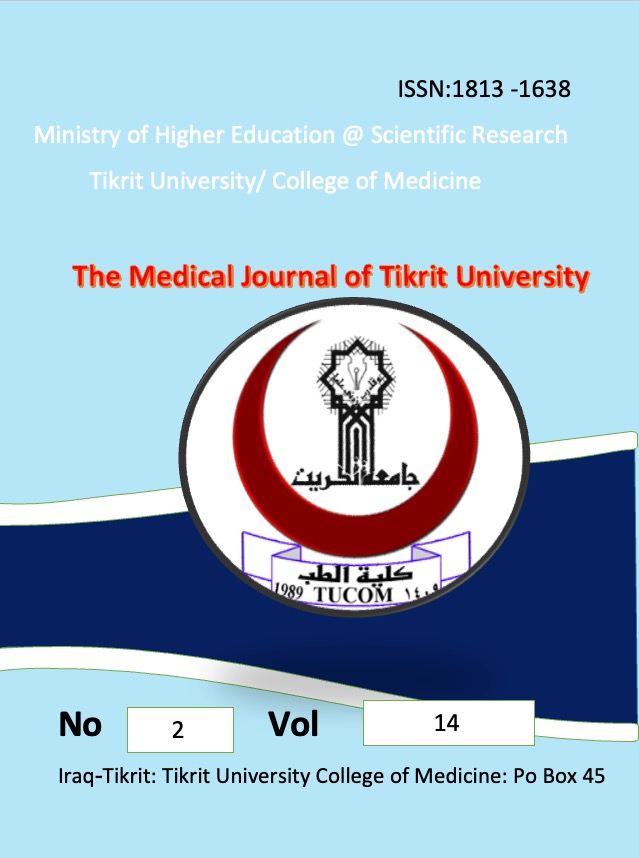Epidemiology of acute cryptosporidiosis among infants and young children in AL-Tameem Province
Abstract
This study was conducted in Kirkuk city, A1-Ta'meem Province , on 612 infants and young children up to six years of age, suffering from acute diarrhea for less than two weeks duration, who were diagnosed as acute gastroenteritis, attended Kirkuk Pediatric Hospital Paediatric Departments of Saddam General Hospital, A1-Ta'meem General Hospital and three other Primary Health Centers round the city. The samples were chosen randomly. The main aim was to study the epidemiology of acute astroenteritis due to acute Cryptosporidiosis among infants and young children in the city during one year, started from the first of August 1998 till the
end of July 1999. Questionnaire, data collection, physical examination and general stool examination were carried out for each patient, direct method used; modified Zeil-Neelson technique to detect cryptosporidium oocysts was performed. It was found that the prevalence rate of acute Cryptosporidiosis was (8.82%) . There were no significant differences between the two sexes. It was highest in Spring months (13.09%), (26.2%), respectively. Followed by the three other seasons. The highest rate of acute Cryptosporidiosis was among children less than two years of age . There was no significant difference between the rate acute Cryptosporidiosis and the place of residency. It is indicated that the highest rates of both infections were among children from (6- 10) family size. The highest rate of acute Cryptosporidiosis was recorded among (4-4.9) crowding index group. The study revealed that the attack rates of acute Cryptosporidiosis were lowest among children of educated mothers than those of illiterate or low educated mothers. The prevalence rates of was lower among children of house wives mothers than those of employed mothers, and was lowest among infants on breast feeding than those practicing artificial or mixed feeding, while rate of infection was highest among children in contact with poultry than those in
contact with other animals or without contact.





